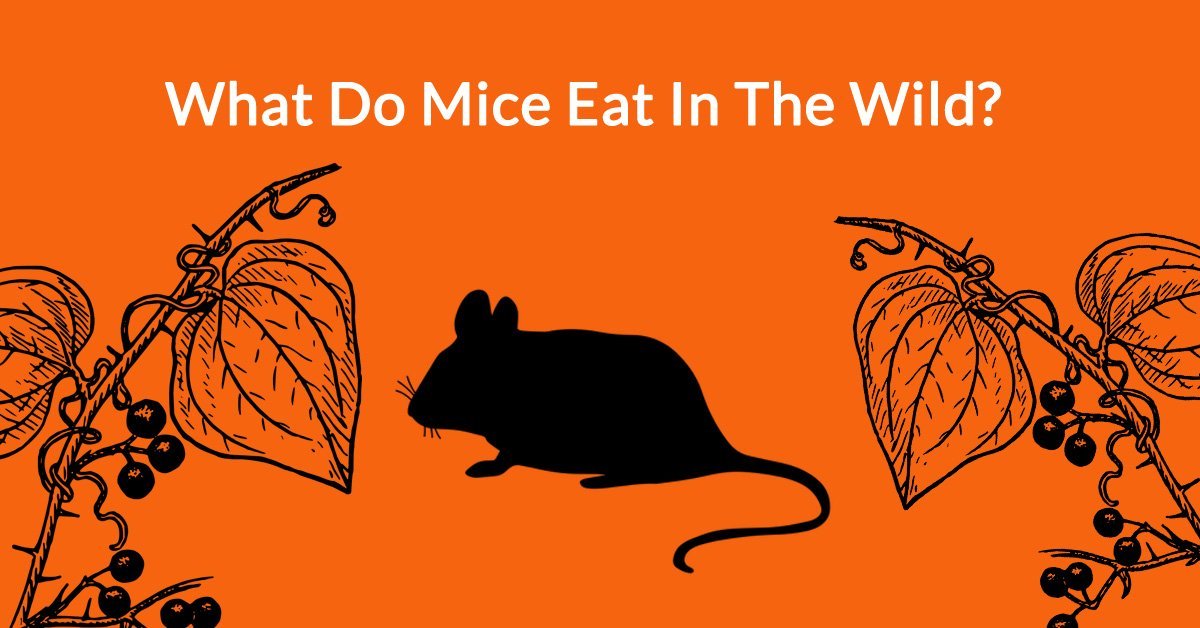
What Do Mice Eat In The Wild?

If you have a mouse problem then you can probably trace it back to food. It takes a lot to lure a mouse into someone's home or workplace. After all, from a mouse's perspective humans are dangerous giants. One of the main factors that can lure mice into human habitats is the promise of a good meal, and food's also one of the main things that you can use to take care of a rodent problem.
There’s More to a Rodent’s Life Than Cheese
Taking care of a rodent problem should begin by figuring out how it started in the first place. A mouse will sometimes venture into a building to get out of the cold or rain. But in those cases they'll typically head right back out into nature once things have settled down. However, the big exception there is if they smell a ready supply of food.
If a mouse notices some of his favorite foods, he may just decide to become an uninvited houseguest. You might not even think that you have anything a mouse would be interested in. For example, most people think that there's no bigger lure for a mouse than cheese. After all, most of us grew up with cartoons depicting rodents eternally searching for a block of cheese. You might think that you're safe from a mouse infestation if you aren't regularly leaving blocks of cheese out overnight.

It's true that any given mouse will probably like cheese, but remember that rodents don't really encounter cheese in their natural environment. A mouse is primarily interested in food that it's familiar with. Few things temp a mouse like the sights and smells it's already familiar with. After all, what gets your own stomach rumbling? Are you more tempted by an abstract idea of food that you've never tasted or by a memory of your favorite meal? You're obviously more tempted by the food you can remember the taste of, and a mouse is no different in that respect. Of course, this also raises the question of what a mouse eats in nature.
A Surprisingly Human Way of Looking at the World
A mouse can thrive in a wide range of environments. However, they're generally happiest within forests and grassy plains. Now take a minute to think about what kinds of foods you'd enjoy if you were camping out in those areas. Fruits and berries would be most people's first choices of forest fare. And the average mouse will enthusiastically agree with that opinion.

A mouse in the wild will eat almost anything it can get its paws on. But they love few foods as much as berries and fruit. The plump berries found under summer skies are as much of a draw for a mouse as for humans. And humans aren't the only mammals excited by the fall's ripe apples. A mouse loves apples and any other fruit it can find. Of course, getting to those delicacies is a different matter. The average mouse will get a real workout when trying to climb up to reach fruits and berries, but the average forest setting has a lot more to offer than sugary treats. Like humans, mice need to eat a lot of protein to build up muscle. And the average mouse needs to stay in shape far more than the average human. After all, humans can order our favorite dessert off a menu. A mouse usually needs to take on some imposing climbs and aerial acrobatics to get at fresh berries. So what does a mouse eat for protein?
A Mouse’s View of Protein
The mice diet might have an occasional sugary treat, but the bulk of their scavenging goes towards more protein-heavy fare. Grains and seeds are some of the most important parts of the mice diet. Plants with lots of seeds, like sunflowers, can provide some significant protein for a mouse.
Many people are surprised to find that a mouse will take in some animal protein as well. You probably aren't thinking of the average mouse as an apex predator, and you're right, they usually aren't really hunting for meat. If a mouse gets to eat another mammal it'll typically be in the form of carrion. A mouse will seldom try to take down another animal in order to get a meal, but he's happy to eat any leftovers from another animal's hunt.
Though, a mouse will still hunt prey of more humble origin. The average mouse will eat a wide variety of insects and even worms. If you find that your composting isn't going very well then you may have a mouse sneaking into it for a midnight snack of worms. Even slugs and snails can provide a protein-packed meal for mice, but there's one other type of protein that plays a surprising role in a mouse's diet - acorns.

The Surprising Role of Acorns
Most people are quite familiar with the acorn hoarding habits of squirrels. However, it turns out that a mouse will do almost the exact same thing. The main difference comes from the fact that the mouse will go about things in a far more discreet manner than their larger cousins.
The average mouse loves acorns for a variety of different reasons, but one of the most important has to do with their teeth. A mouse's teeth are always growing. This means that they're not just good at gnawing through tough material like an acorn's shell. A mouse actually needs to keep his teeth manageable by gnawing on those types of tough material. Combine that with the high protein level of an acorn and it's easy to see why they're a mouse favorite.
A mouse will typically try to hide as many acorns as it possibly can. But he'll face a lot of competition from other rodents such as the aforementioned squirrels, but humans are an entirely different matter. A mouse is generally pretty smart. He'll notice that humans ignore all of the delicious acorns scattered around their environment. As such, the mouse will usually put two and two together and decide that a human's home is a great place to hide acorns for the winter, and this is when he'll usually get his first whiff of all the food inside the typical home.
Homes Provide an Upgraded Experience of Everything Eaten in the Wild
Once a mouse finds its way into a human home it'll begin to realize just how much food is available. A mouse is generally going to start out by looking for food that's roughly analogous to what he's already familiar with. You might think that you don't have any of the foods a mouse normally eats.
However, think about just what makes berries and fruits taste so great. A mouse is interested in the sugar found in those naturally sweet items, and the average home offers a wide variety of options there. What's more, a mouse gnawing on things to keep his teeth in shape will quickly discover other human delicacies. A mouse might start out chewing cardboard boxes to keep his teeth trimmed, but he'll soon discover the joys of cereal and other packaged food.

This is one of the reasons why it's best to use humane lures which use properly formulated mouse bait. This type of mouse bait will offer everything a mouse loves in one single meal. Just like human kitchens build on a mouse's diet in the wild, the lures offer something to take things to the next level. It's also important to take action as quickly as possible. A mouse usually begins his feast by looking for similar items to what he's familiar with in the wild, but once he settles into a human's home he'll begin to realize that it's a far easier life than found outdoors. It's important to trap rodents before they really begin to settle in and start a family within your home.
- Choosing a selection results in a full page refresh.
!

